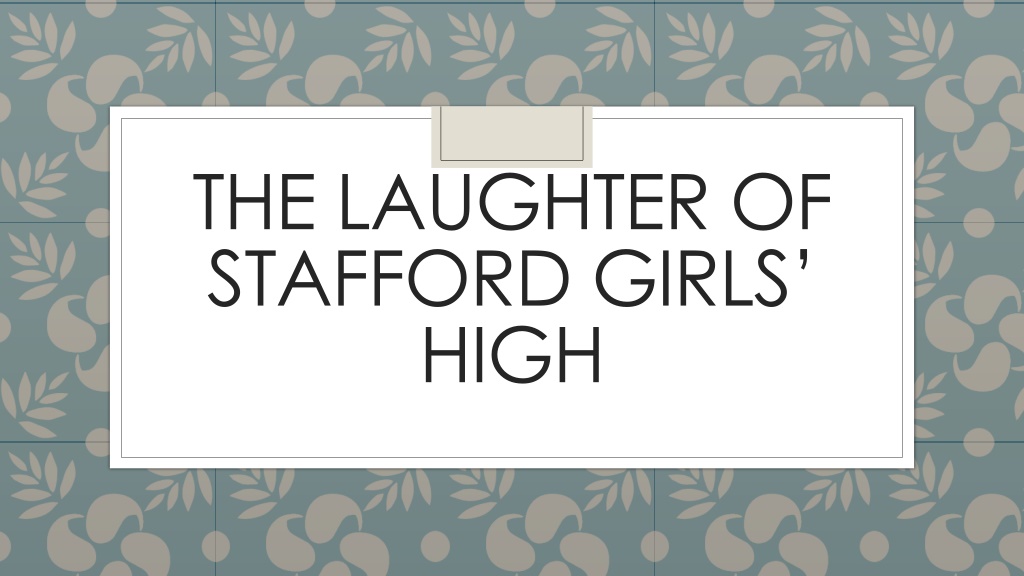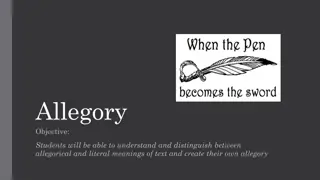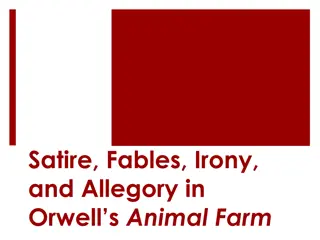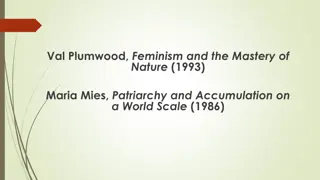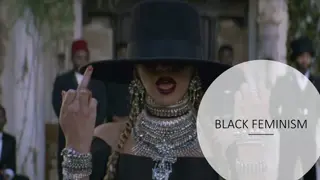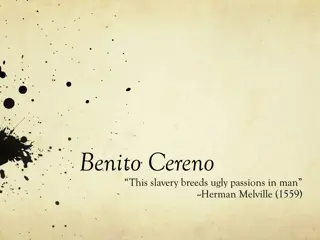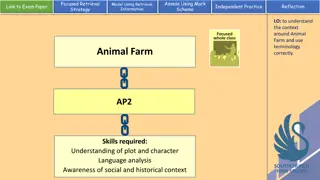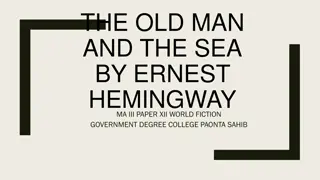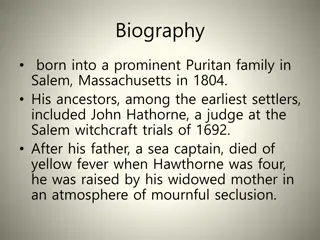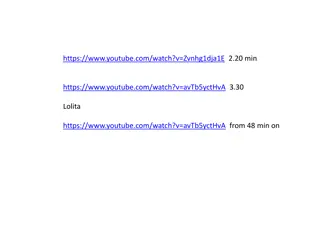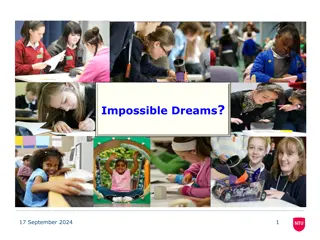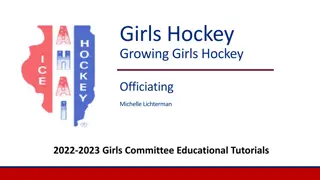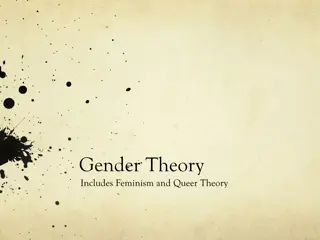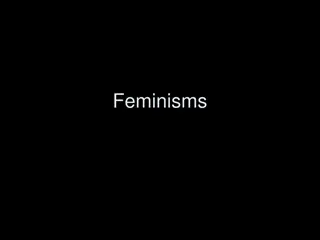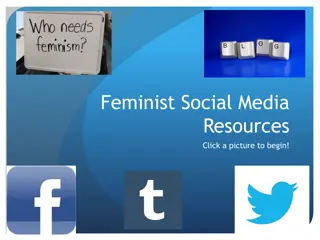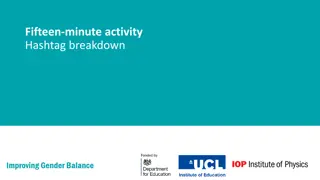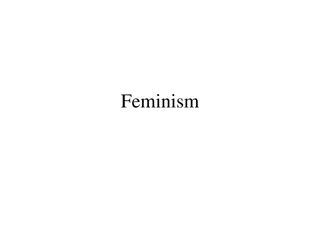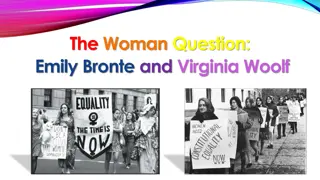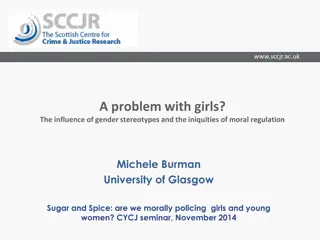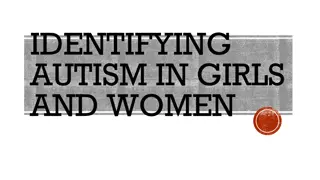Exploring Allegory and Feminism in "The Laughter of Stafford Girls High
Delve into the allegorical elements and feminist themes present in "The Laughter of Stafford Girls High" through discussions on liberation, generational impact, and societal constraints. Analyze how laughter and feminism intersect as tools for empowerment and examine the portrayal of teachers in relation to feminist literature like "The Handmaid's Tale."
Download Presentation

Please find below an Image/Link to download the presentation.
The content on the website is provided AS IS for your information and personal use only. It may not be sold, licensed, or shared on other websites without obtaining consent from the author. Download presentation by click this link. If you encounter any issues during the download, it is possible that the publisher has removed the file from their server.
E N D
Presentation Transcript
THE LAUGHTER OF STAFFORD GIRLS HIGH
An allegory So ..what is the allegory in The Laughter of Stafford Girls High ?
Get into groups/pairs. For each of the following statements, use your poem to make notes and start to develop interpretations / consider Duffy s message: The relationship between the laughter and feminism The effect of feminism / the laughter on different generations Laughter is liberating and feminism is often described as the liberation of women. But what does the poem show the women as being liberated from? What are the things holding them back before the laughter started? Do you think the teachers in the poem are in any similar to the Aunts in The Handmaid s Tale ?
So, what is Duffy suggesting that the women in the poem want, besides a husband, children and a home? Complete the activity on the handout Teachers Transforming , thinking carefully about how the teachers are presented before and after the laughter, but most importantly, trying to draw conclusions as to what Duffy s message might be.
In your groups, collect evidence from the poem that shows language as being a product of patriarchal society.
